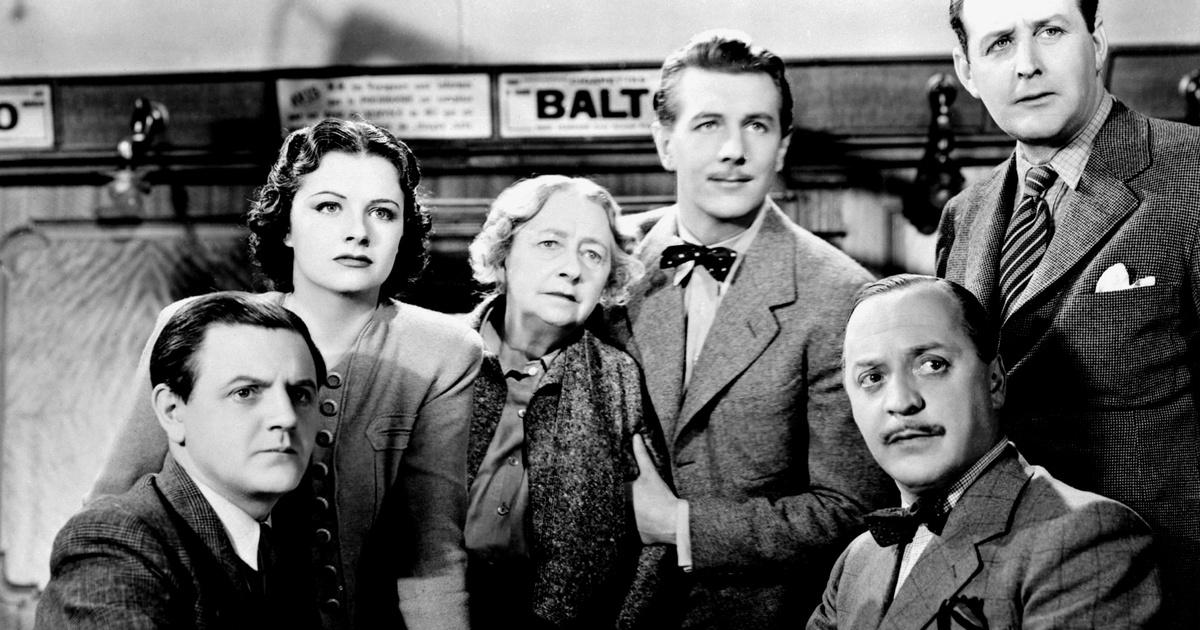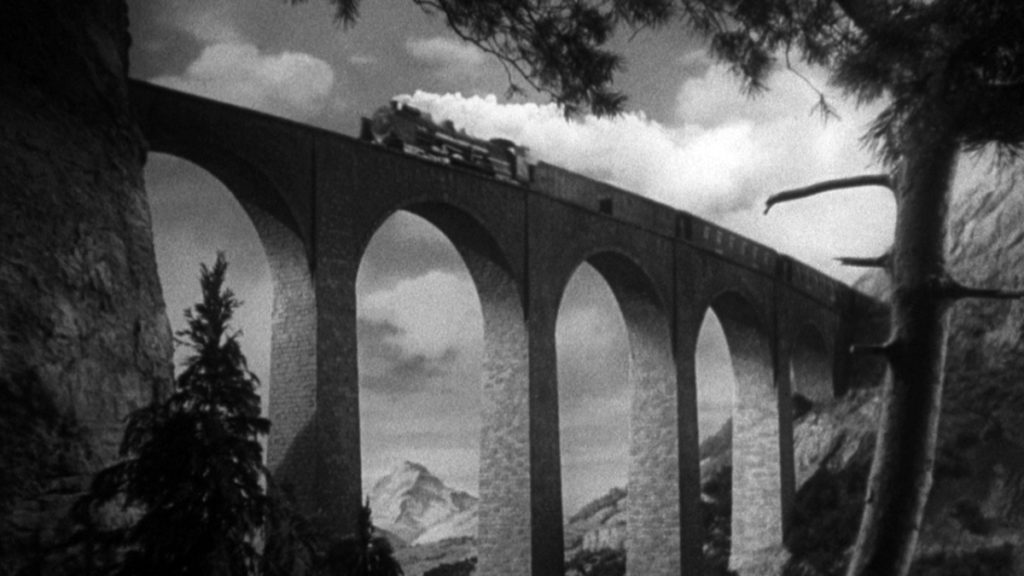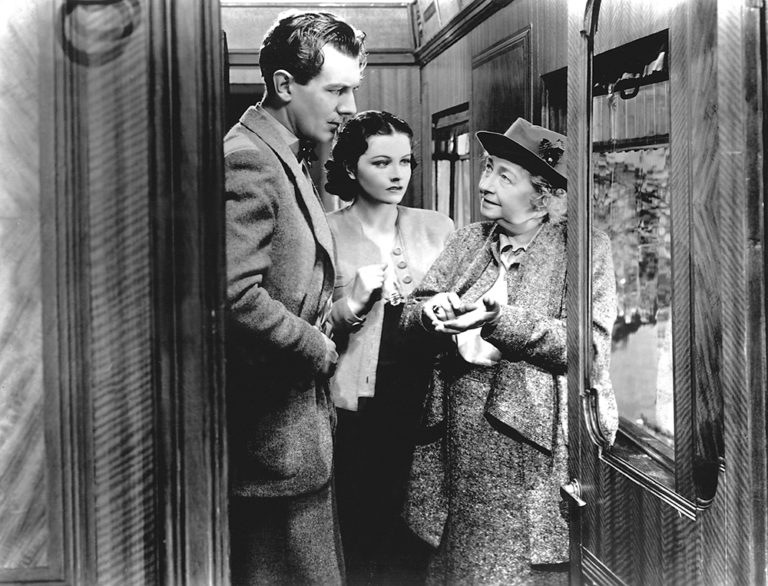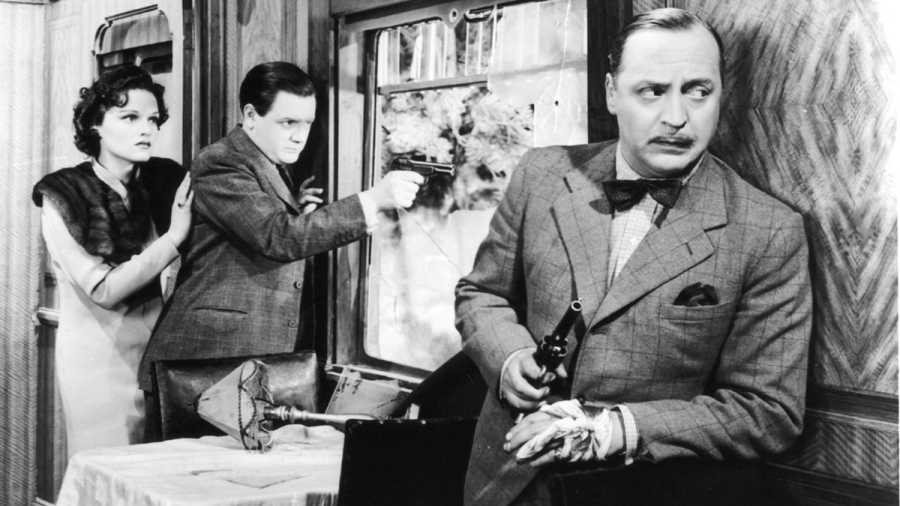| Dan Howard |

The Lady Vanishes plays at the Heights Theater on Thursday, April 4th. Visit trylon.org for tickets and more information.
For years, Alfred Hitchcock was simply a name and a face to me. Yes, he is one of the greatest directors of cinema, but his work had never resonated with me in the same way as the works of filmmakers as, say, Akira Kurosawa, David Lynch, or Greta Gerwig have. Maybe I started watching his films when I was too young. Or I should’ve initially taken the hint from Lynch when he said he adores Hitchcock. How could I get a better understanding of the layers that lay dormant in every Hitchcock film? It was time to finally dive into one of the most essential cinema books: Hitchcock/Truffaut. Francois Truffaut, perhaps the greatest French film auteur, wrote a book about his 50-hour interview with Alfred Hitchcock. This was quite unprecedented when the book was published in 1966—Truffaut risked his entire career on it—and filmmakers and film lovers all over the world have been grateful ever since. It was there that I began to read in depth about Hitchcock’s work in his own words; how he thinks of the audience first when it comes to the telling of a story, how they can relate more to an innocent man being accused of a crime, etc. Considering these aspects while staying as true as he can to his craft and his vision is deeply impressive and noble. There’s a saying that goes something like “You can always tell the type of person an artist truly is based on the work they create.” I first read it as a quote from Akira Kurosawa. It also rings true with Hitchcock as well as any artist. If you take the care and give the attention a work needs to uncover the layers and the clandestine nature of emotions that Hitchcock feels in his own heart, you find that these things are often hidden in plain sight. Two of the biggest recurring themes you see in nearly every Hitchcock movie are fear and suspense. He knows exactly how to craft the perfect thriller. After his triumphs with The 39 Steps, Secret Agent, and Sabotage, it’s safe to say that he was getting the spy thriller down with The Lady Vanishes.
The more I take a deep dive into the world of Alfred Hitchcock, the more I notice the recurring themes in his work: Spies. Someone wrongly accused of a crime must clear their name. Mystery. Suspense. Hitchcock himself makes an appearance within the first 15 minutes of the film. In fact, the more I think about it, the more I realize I didn’t know all that much about Hitchcock outside of the 15 or so films of his that I have seen. What I’ve managed to find while digging deeper has only exponentially increased my admiration for Mr. Hitchcock, especially when viewing The Lady Vanishes for the second time.
In The Lady Vanishes, we follow a group of characters who all meet in a hotel in a fictional country called Bandrika, waiting for their train to leave after being delayed due to the snow. Iris (Margaret Lockwood), our main protagonist, strikes up a friendship with an older woman named Miss Froy (May Whitty), bonding over their complaints about a loud guest right above them. Upon the departure of the train, Miss Froy and Iris share a cabin with two other passengers. Curiously, Miss Froy is gone when Iris wakes up from a nap and Iris is stunned when all the passengers that she encounters claim there is no Miss Froy on the train. In fact, she doesn’t exist at all. Determined to prove the existence of her elderly friend, Iris enlists help from the noisy hotel guest, Gilbert Redman (Michael Redgrave), to prove that Miss Froy is real and uncover the truth behind why she is being hidden.

Reminiscent of The 39 Steps, The Lady Vanishes also tackles the idea of the main protagonist simply finding answers when a mysterious person suddenly drops into their life and, equally suddenly, has to depart or disappear under mysterious circumstances. The protagonist then usually stumbles upon an espionage operation. The only difference with Iris’s situation is that there is more gaslighting involved and far fewer places to go to while being stuck on a moving train. It seems like there was quite a bit of gaslighting in the cinema of that time, usually with women falling victim to men’s cruelties (i.e. Gaslight starring Ingrid Bergman). However, it feels like Hitchcock is a lot more compassionate towards many of his female characters, especially with Iris and Miss Froy. When Iris is stuck in a mindset of life having nothing left to offer her but marriage, being abruptly placed upon a covert espionage undertaking would certainly throw one for a loop and offer a newfound jolt of excitement in their life. It’s almost as if Hitchcock had heard another woman in his life saying the same thing that Iris disclosed at the beginning of the film and thought to himself: “What if life did have more to offer someone with that type of outlook? Something she would never expect?” Perhaps this occurs by finding an unexpected friendship in a much older woman? Someone who has seen it all and is still a valued asset to something so important even being as old as she is? The choice to have Miss Froy, a woman of about 80 years, as the keeper of secret and urgent political intel speaks volumes about Hitchcock in ways that he might not have even realized himself. He may have played it off as the choice simply being good for the plot of the film, but perhaps his decision behind both the way he portrayed Iris and Miss Froy lies in a deeper admiration for women.

In contrast to this observation about the women of Hitchcock films, I can’t help but notice the pattern of his male protagonists consistently being accused of a crime they didn’t commit. While Hitchcock only revealed so much about his childhood in his interview with Truffaut, he did recount a story of when he was 5 years old: His father sent him to deliver a message to their local police station where the cops ended up locking him up for a few minutes, proclaiming that “This is what happens to naughty little boys!” This led to a lifelong fear of the police for Hitchcock. Certainly, it explains the recurring “wrongly accused” theme in films like North By Northwest, The Wrong Man, etc. Hitchcock claimed—and he’s entirely right—that someone being falsely accused is more relatable to the audience as opposed to a guilty man on the run, but it also seems like Hitchcock is working through his own fears after the experience with the police at a young age. I feel Hitchcock identifies the most with these characters, the ones who are trying so hard to prove their innocence against harsh odds. Hitchcock had mastered the audience mindset that is essential for all directors to have. He wasn’t necessarily only pleasing the audience but viewing himself as the sole audience member of his own films. It’s been long said that artists must make art for only one person: themselves. When unleashed upon the world, this art will attract the audience that it’s meant to. So, when Hitchcock claims that the audience can relate more to the innocent who are wrongly accused, I believe Hitchcock is saying he can relate.
One also has to wonder if that police incident awakened some kind of thrill inside the 5-year-old Hitchcock’s mind. It at least put him on the path of what he would be the most known for in his career: The master of suspense. It’s present in every single one of his films, and while The Lady Vanishes is no exception, the suspense is not quite on the same level as Psycho or The Birds. 1938 was still rather early on in Hitchcock’s career. Despite The Lady Vanishes being his 26th film out of the almost 60 he directed in his lifetime, you can tell he is still finding his signature aesthetic. While it may not be as apparent in The Lady Vanishes, you see differing forms of what Hitchcock refers to as his “Bomb Theory” even in his 26th feature. This theory goes like this: If you simply show a bomb exploding, the audience will be startled, but if you show the bomb to the audience while on a countdown to explode, the audience will be more on edge. The anticipation of an exploding bomb is more powerful than the bomb itself. I mean, how many times have we been at the edge of our seats after an on-screen murder occurs? Probably not that much. How many of us were at the edge of our seats as Iris and Gilbert got closer to the truth about Miss Froy and pulled back more and more curtains on the secret operation, risking their lives in the process? We’ve seen Hitchcock’s suspense demonstrate time and time again that the destination is not more important than the journey.

Francois Truffaut pointed out in the introduction of his Hitchcock book that Hitchcock seemed to fear being doubted. How do you make sure no one doubts you and your work? By becoming the director no one will question. Establishing his storytelling methods using suspense, false accusations, spies, and oftentimes murder, as well as by keeping in touch with his silent film roots, Hitchcock ensured that the visual storytelling that he had learned to craft in his first decade as a director would not be lost to sound. Indeed, he became the director no one would dare to second-guess. From a narrative standpoint, Hitchcock’s films may not be the most complex compared to films by directors like Andrei Tarkovsky, David Lynch, or even Christopher Nolan, but I believe Hitchcock intended for them to be that way for a good reason. An audience may not remember every detail of a specific scene, or every line of dialogue, but they will always remember how a film made them feel. Generation after generation will continue to be blown away and inspired by Hitchcock, and he has more than earned the praise of one of his earliest masterpieces: The Lady Vanishes.
Edited by Olga Tchepikova-Treon
